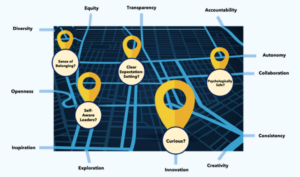
What Would Your Culture Map Reveal?
Sponsored by The Culture Platform What makes maps so special is they tell you exactly where to find places you want to visit. Wouldn’t it

Sponsored by The Culture Platform What makes maps so special is they tell you exactly where to find places you want to visit. Wouldn’t it

A fine mechanical watch is exquisite in its own right. But if you look closer, you’ll see more than just a special timepiece. It is

Diversity, Equity, and Inclusion (DEI) is by definition a people-centered business endeavor. So at first glance, the phrase “people-first DEI” may seem redundant. But that’s
How critical is work culture to recruitment and employee retention? It’s important, I’ll give you that. But a feel good work culture might do more
“The roof, the roof, the roof is on fire. We don’t need no water let the m-f burn.” –The Bloodhound Gang At least, that’s the